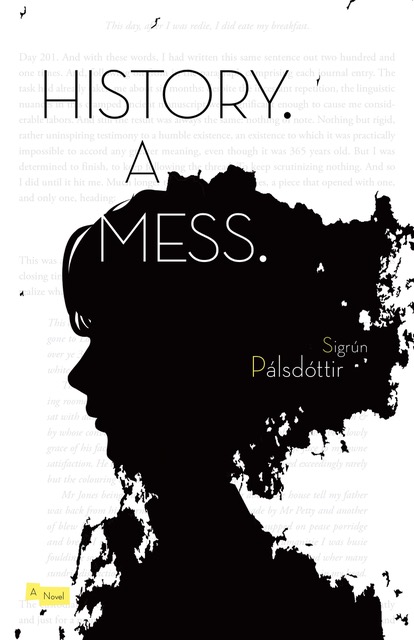 While studying a seventeenth-century diary, the protagonist of History. A Mess. uncovers information about the first documented professional female artist. This discovery promises to change her academic career, and life in general . . . until she realizes that her “discovery” was nothing more than two pages stuck together. At this point there’s no going back though, and she goes to great lengths to hide her mistake—undermining her sanity in the process. A shifty, satirical novel that’s funny and colorful, while also raising essential questions about truth, research, and the very nature of belief.
While studying a seventeenth-century diary, the protagonist of History. A Mess. uncovers information about the first documented professional female artist. This discovery promises to change her academic career, and life in general . . . until she realizes that her “discovery” was nothing more than two pages stuck together. At this point there’s no going back though, and she goes to great lengths to hide her mistake—undermining her sanity in the process. A shifty, satirical novel that’s funny and colorful, while also raising essential questions about truth, research, and the very nature of belief.
Translated from the Icelandic by Lytton Smith
REVIEWS
As her state of mind becomes increasingly fraught, Lytton Smith’s adept translation skillfully conveys [the narrator’s] neurotic, internal experience, which often expresses possibilities, thoughts, speculation, and interpretations instead of an external reality.
Callum McAllister, Asymptote Journal
History. A Mess. . . . is at once a disturbing but riveting portrait of a glassy psyche and an enlightening critique of the constraints and pressures of modern scholarship.
Bailey Trela, Ploughshares
Fans of the nouveau roman—Marguerite Duras, Alain Robbe-Grillet, Nathalie Sarraute, etc.—will be right at home here.
Kirkus Reviews
Pálsdóttir writes with the hand of a mystery author and the mind of a postmodernist, teasing out her protagonist’s problem while playing with literary forms, fragmenting timelines, and injecting fierce irony.
Publishers Weekly
Its ambition is met with resounding success every step of the way.
Will Harris, Books and Bao
What I admire most about Pálsdóttir’s writing is her ability to hide a strictly structured course of events under a gliding, occasionally deliberately (but not distractingly) chaotic style; her ability to orchestrate the random; to construct a perspective for the narrator that, most of the time, reveals both everything and nothing about what is actually going on; and the way she covers real tensions and worries with a quilt of details, as they are so often covered in life.
Rein Raud, European Literature Network